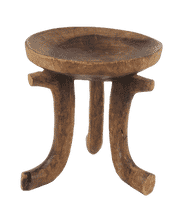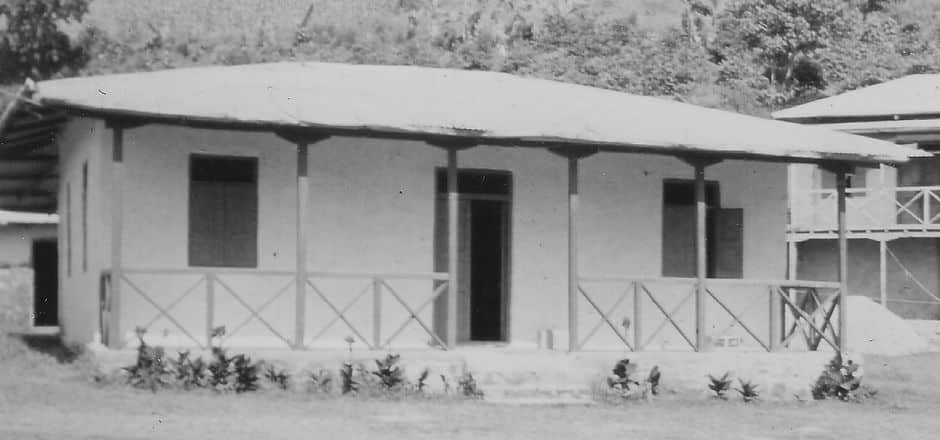Presented by Museum of the Peace Corps Experience and American University Museum
Gurage people, mid-twentieth century
Jimma, Oromia, Ethiopia
Wanza wood, 12 x 12 x 12 in.
Courtesy of Courtney Arnold, Ethiopia, Asebe Teferi 1964–66

We entered our Ethiopian mountain town as part of Peace Corps’ third wave of 300 volunteers. Lightbulbs glowed dimly through windows as we entered Asebe Teferi, near Dejazmatch Wolde Gabriel aba Seitan secondary school. Behind a grove of coffee trees and a shepherd’s one-room house was our new home.
The walls of our house were built of rough-hewn eucalyptus stuffed with straw and a blend of mud and cow dung. It was punctuated by seven cheerful, blue wooden shutters and four doors. We filled the living room with furnishings from the local market.
While we were at school, 15-year-old Amina cooked, shopped, and swiped a broom at neighborhood chickens, which chirped and pecked through our house. After school and on weekends, our home was surrounded by curious and eager students—Amhara, Somali, Oromo, Gurage, Egyptian, and a few with Greek, Armenian, Italian, or Turkish backgrounds. We offered a room in the back of the house to two older students, both named Mohammed. The Mohammeds became our trusted guides, interpreters, and counselors on Ethiopia’s cultural complexities.
One of our household furnishings was a three-legged wooden stool from far-off Jimma. This kind of stool is used in homes and coffeehouses in rural Ethiopia and has become popular in small hotels and coffeehouses in larger cities. Gurages, who are best known for carving these stools, shape them with an adze from one piece of wood from the wanza tree. Since we returned to the United States, the wooden stool has been a familiar piece of living room furniture as our children grew up. Just as in Ethiopia, it has witnessed the lively gatherings of friends and family together in our home.

The Committee for a Museum of the Peace Corps Experience is a 501(c)(3) private nonprofit organization. Tax ID: EIN # 93-1289853
The Museum is not affiliated with the U.S. Peace Corps and not acting on behalf of the U.S. Peace Corps.
Museum of the Peace Corps Experience © 2024. All Rights Reserved.